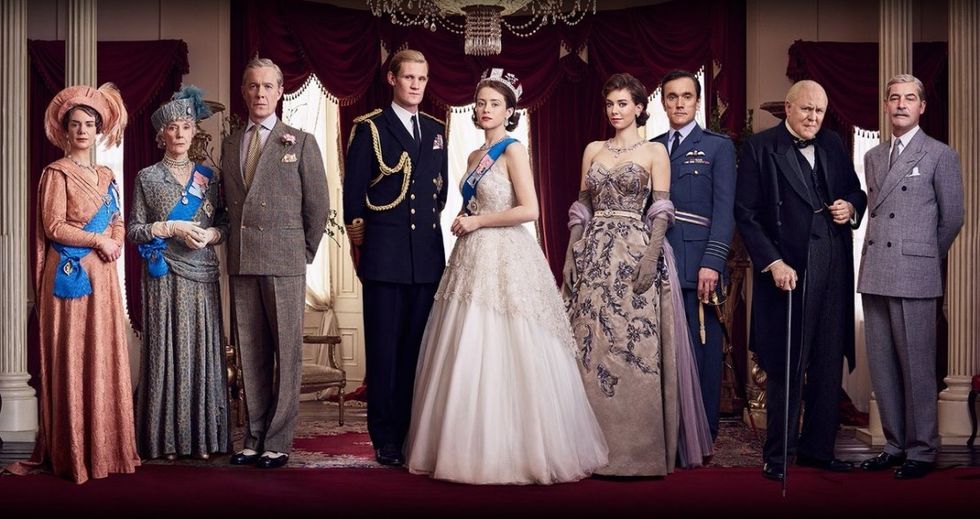
Our relationship with cinema has been in flux since the Lumiere brothers pointed a camera at a train and let the film roll. Across the 20th and into the 21st centuries, human beings have come to define life moments and explain complex concepts through the power of the moving image.
Movies tell us about love, life, happiness, social justice, and morality the same way novels and books informed those who came before them.
But what Does “Cinematic” mean anymore?
As technology raced alongside cinema, we saw the concepts in film translate to television, streaming, YouTube, video games, and every other visual medium we’ve created. This changed and possibly distorted what it means to be “cinematic.”
The Washington Post has a whole page dedicated to it.
Check out this video essay from Patrick (H) Willems and let’s talk after the jump.
What Does “Cinematic” Mean Anymore?
When we’re talking about movies (and cinematic TV), we’re talking about a visual medium. Unlike plays or novels, the cinema can take you somewhere and show you something.
It does not have to rely on dialogue, it can use different shots or camera angles to inform the viewer. It can play with aspect ratios and freeze frames to communicate emotions and plot points. This is all cinematic language.
“Cinematic” Definition
Strictly speaking, Merriam Webster says cinematic means “relating to, suggestive of, or suitable for motion pictures or the filming of motion pictures cinematic principles and techniques cinematic special effects.”
To be cinematic, there has to be a deliberate hand guiding the visuals. And another level of artistry that is planned and scripted.
Cinematic Movies
In the video above, we learned that in most cases, the word “cinematic” refers to the way we feel about something we’re watching. Does this feel like the movies?
It could be something happening to us in our lives or something happening while we stream a movie at home, but cinematic language is so pervasive in our brains that it creates a thought process, allowing us to judge every moment of our lives against the things we have seen on screen.
Are all movies cinematic? Probably not. Some films are shot just for television and done with coverage that makes it look static, play-like, and not fit for the big screen. Not every movie made has the visual language and complexity to be called cinematic.
But in turn, not only movies have the power to be cinematic.
Cinematic Movie Examples
Cinematic movies stand out for their exceptional artistic quality, engaging storytelling, groundbreaking visual effects, masterful cinematography, and significant impact on both audiences and the film industry.
These films are notable for their pioneering techniques, compelling performances, and capacity to stir profound emotions across a variety of genres, including drama, science fiction, fantasy, and historical epics.
Below are examples of cinematic movies that have made a substantial impact across different eras and genres:
Classic Cinema
- Citizen Kane (1941): Helmed by Orson Welles, this movie is often hailed as the greatest film ever produced, distinguished by its novel narrative structure and cinematography.
- Casablanca (1942): Set against the backdrop of World War II, this romantic drama is famed for its unforgettable characters, iconic lines, and enduring love story.
- Gone with the Wind (1939): An epic tale of romance set during the American Civil War, celebrated for its grand scale, compelling narrative, and vivid depiction of the American South.
Modern Classics
- The Godfather (1972): Directed by Francis Ford Coppola, this crime drama is revered for its profound storytelling, intricate characters, and significant cultural impact.
- 2001: A Space Odyssey (1968): A visionary science fiction work by Stanley Kubrick, recognized for its innovative visual effects, scientific precision, and sparse dialogue.
- Schindler’s List (1993): A historical drama by Steven Spielberg, acclaimed for its emotional depth, striking cinematography, and harrowing portrayal of the Holocaust.
Contemporary Cinema
- Inception (2010): A science fiction narrative from Christopher Nolan, known for its intricate plot, cutting-edge visual effects, and exploration of the subconscious.
- Parasite (2019): Directed by Bong Joon-ho, this South Korean masterpiece is lauded for its social critique, engaging narrative, and genre-blending prowess.
- La La Land (2016): A musical romantic drama celebrated for its tribute to classic Hollywood musicals, dynamic cinematography, and deep emotional resonance.
Genre-Defining Cinema
- Star Wars: Episode IV – A New Hope (1977): A science fiction saga that transformed visual effects and storytelling in cinema, establishing a lasting legacy.
- The Lord of the Rings: The Fellowship of the Ring (2001): An epic fantasy film that redefined standards for cinematic world-building, visual effects, and ensemble casting.
These examples represent a fraction of the cinematic masterpieces that have shaped the evolution of film as an art form. Each movie is unique in its vision, execution, and influence, offering global audiences unforgettable cinematic experiences.
 ‘Parasite’
‘Parasite’
CREDIT: CJ Entertainment
Cinematic TV Show Examples
Cinematic television has risen in prominence, especially with the advent of streaming services, offering productions that rival the quality and scope of feature films.
These series are characterized by high production values, complex narratives, deep character development, and innovative storytelling techniques.
Here are some examples of cinematic TV shows across various genres:
Drama
- Breaking Bad (2008-2013): Known for its intricate plot, character development, and moral quandaries, this series is often cited as one of the greatest TV shows of all time.
- Mad Men (2007-2015): Offers a stylized view of the 1960s advertising world, lauded for its historical authenticity, visual style, and deep exploration of its characters’ lives.
Fantasy and Science Fiction
- Game of Thrones (2011-2019): A sprawling epic based on George R.R. Martin’s novels, celebrated for its complex characters, intricate political plots, and vast world-building.
- Westworld (2016-Present): Combines science fiction and western elements to explore themes of artificial intelligence and human nature, known for its philosophical depth and visual storytelling.
Thriller and Mystery
- True Detective (2014-Present): Each season of this anthology series explores a new mystery, known for its dark themes, complex characters, and atmospheric direction.
- Stranger Things (2016-Present): Blends science fiction, horror, and 1980s nostalgia, recognized for its engaging storyline, character dynamics, and homage to 1980s genre films.
Historical and Period Pieces
- The Crown (2016-Present): Chronicles the reign of Queen Elizabeth II, acclaimed for its meticulous attention to historical detail, production values, and performances.
- Chernobyl (2019): A miniseries recounting the 1986 nuclear disaster, praised for its accurate portrayal of the event, tension-filled narrative, and compelling character studies.
Comedy and Dramedy
- Fleabag (2016-2019): Known for its sharp wit, breaking of the fourth wall, and deep emotional resonance, offering a unique blend of comedy and drama.
- Atlanta (2016-Present): Blends surreal comedy with social commentary, focusing on the Atlanta rap scene and the struggles of its characters.
These series have not only pushed the boundaries of television storytelling but also demonstrated the potential for TV to offer cinematic experiences that engage audiences over longer periods than traditional films. They are marked by their willingness to explore complex themes, invest in high-quality production elements, and develop characters and stories with depth and nuance.
 ‘The Crown’
‘The Crown’
Credit: Netflix
Has the concept of “cinematic” evolved?
As I said in the opening, we’ve had over 100 years of cinematic experiences. It’s hard to put exactly into words, but you know something is cinematic when you feel it. As Scorsese wrote in the New York Times, cinema takes risks and locks you into something you’ve never seen before. That definition has changed in only a few decades, and now can be applied to some television as well.
As professor and scholar, Deborah Jaramillo wrote in chapter 4 of Television Aesthetics and Style:
“‘Cinematic’ should be a contentious word in the field of television studies. It should raise the eyebrows of anyone who thinks and writes about television; instead, it has become commonplace for scholars and popular critics to use the term as shorthand when discussing the complex visual and aural style in scripted series such as The Sopranos, Mad Men, and Breaking Bad. ‘Cinematic’ connotes artistry mixed with a sense of grandeur. A cinematic movie is one that requires a theatrical viewing in order to extract every ounce of visual and aural depth from it. The term is reserved for films that reveal the exploitation of filmmaking technologies in the service of skill and creative vision. It is an inherently positive, even boastful word that many people rally around and ascribe to the best of the best on TV. The use of the term ‘cinematic’ to describe sophistication and beauty on television.”
This sophistication is taking over television. While there are still multicam shows that thrive on shooting and building in the edit, many television dramas are now working toward being more cinematic.
They have larger budgets, clear intent behind camera moves, and instead of thriving on coverage, they’re testing particular angles and theories, bridging the gap between a director and writer medium to find a cohesive vision.
As critics Matt Zoller Seitz and Chris Wade wrote in Vulture, “It’s a matter of judgment and discernment, of having a vision as well as a plan, making particular choices for particular reasons, and letting those choices guide how a scene is shot. Who is the scene about? What is the scene about?
And how can the direction (and editing and music and cinematography) reinforce this, overtly or subtly, in ways that go beyond simply pointing lots of cameras at a room full of actors and cutting among them as they talk?”
Summing Up the Meaning of “Cinematic”
As you can see, the definition of “cinematic” has changed over the years. As we continue to revolutionize the way we consume stories, more nuance will be brought within the word itself.
As video games, web series, and other forms of content begin to conform to aspect ratios, edits, and angles, we’re going to see an unprecedented era where cinematic language takes over every screen we use day-to-day. Even our smartphones present content in the widescreen format now.
I look forward to seeing where this definition can go and encourage you to post your own theories in the comments.
Where do you think cinematic works will take us in the future?
Author: Jason Hellerman
This article comes from No Film School and can be read on the original site.
